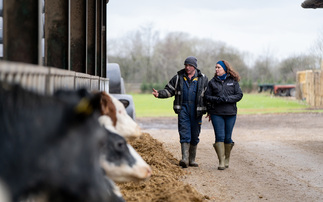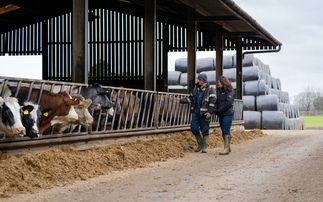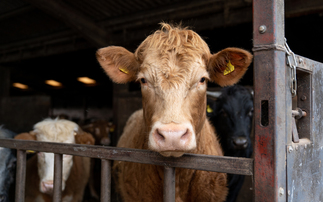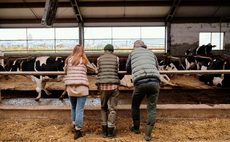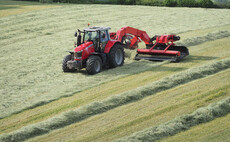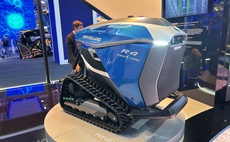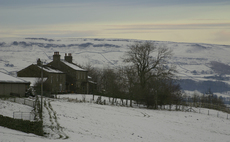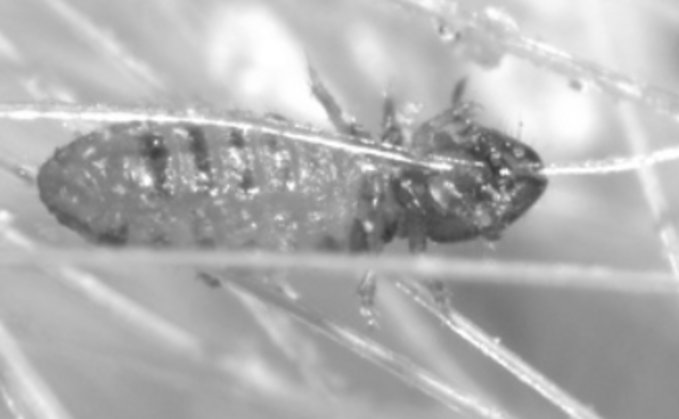
Lice - What are they?
Lice are wingless insects and can cause problems in cattle, called pediculosis, most commonly over the housing period. Cattle can be infested with two different types of lice; (blood) sucking (e.g.��Haematopinus spp.��and��Linognathus vituli) and biting (e.g.��Bovicola bovis). Blood-sucking lice have thinner, pointed heads enabling them to penetrate the skin and feed off the blood of the host. Biting lice are surface-living and have much wider heads and large jaws, to help them feed on the outer layers of the hair shafts, skin flakes and blood scabs.
��
What impact do they have?
��It is not uncommon to find a small number of lice on housed cattle and these tend not to have a significant impact on the host animal. However, if larger numbers are present, cattle will spend a lot of time rubbing and licking themselves in an effort to alleviate their itchiness. This can lead to hair loss and even weight loss, as priority is given to scratching rather than eating. Where blood-sucking lice are present in high numbers, it is possible that cattle may experience anaemia and weakness, as a result of blood loss.
Economic impact
It is difficult to quantify the financial impact of heavy lice infestations. Certainly the hides of affected cattle can be significantly damaged, such that they are of lower quality (the visible blemish seen on hides is known as ‘light spot and fleck') and therefore value. The cost to the leather industry has been put at £20 (over €221) million a year.
It is very important to consider whether there is an underlying cause for heavy louse infestations; debilitated animals are far more likely to be affected by pediculosis, with chronic disease or malnutrition being the main underlying cause.
Life Cycle
Lice can be picked up from contaminated housing but it is far more likely that they are passed directly from animal to animal.
- Biting lice - the female lays an egg every 2 days and these eggs are glued to individual hair shafts. They can be seen easily by the naked eye as white specks. After they hatch, 7-10 days later, they pass through 3 nymph stages before maturing to adults. The whole cycle takes 2-3 weeks. Adult biting lice can live for up to 10 weeks.
Diagnostics
As previously stated, lice and their eggs can often be seen on the skin, without the need for magnification. However, removal and examination with a microscope is the only way to check which species is present.
��
Treatment and Management��
Lice can be controlled through the use of either injectable treatments such as����or topical treatments, such as����and����in the UK or����in Ireland.
It can be useful to know which type of lice is present on cattle prior to treatment as this may influence your choice of product. Due to their feeding habits, injectable treatments can only aid in the control of biting lice (Damalinia bovis); pour on treatments are effective against both biting and sucking lice.
When treating cattle with pour on products, it is very important to ensure the correct dose is calculated and that application can be made easily and effectively. Trying to treat animals that are��not��passing through a race or crush will make it much harder to ensure every last drop is applied!
Also, it is imperative that every animal in the group is treated, to avoid re-infestation.
New animals brought onto the farm need to be treated for the same reason.
Dairy cattle can be treated with����in the UK and����in Ireland��without the worry of having to discard milk after treatment;����in the UK and����in Ireland��is effective against biting and sucking lice and has a nil milk withhold.
While louse numbers decline rapidly following treatment, due to the feeding habits of the parasites, in some cases, several weeks may be required for complete eradication. Cleaning the housing area should help.
Mites - What are they?��
Mites belong to the same class as spiders and ticks. Infestation by mites is called acariasis and mange is the term used to describe the clinical presentation of mite infestation in cattle.
There are two types of mites; burrowing and non-burrowing.
What impact do they have?
Mites feed on blood and lymph (burrowing), or dead skin cells and secretions (non-burrowing) and most spend their entire life on the host animal. Transmission����occurs when animals come into contact with����cattle.
Burrowing mites crawl deep into the layers of the skin, where they pierce the surface and feed on blood and lymph fluid.��Sarcoptes����is the parasite responsible for sarcoptic mange; scaly skin and hair loss����when mite numbers are low and tend to be restricted to the neck and tail head areas. Larger numbers of mites lead to heavily crusted skin and hair loss, with intense itchiness leading to frequent rubbing, biting and licking of the lesions. The skin becomes heavily thickened and develops distinctive folds as a result.
Non-burrowing mites, such as��Demodex����and��Chorioptes��, in high����cause either nodules or crusts to form in certain areas of the body. As they feed on skin cells and debris, they cause irritation, which is further exacerbated by their faeces.
Economic��impact
Persistent scratching, rubbing and licking can not only lead to hide damage, but also to reduced productivity.��Persistent scratching, rubbing and licking can lead to reduced productivity, with milk drop and reduced body condition a common outcome. Dairy cattle are particularly afflicted with chorioptic mange when housed. Mites are found mainly on the hind legs and around the udder, so cows coming into the parlour are often very fidgety, can kick out because of irritation and have decreased milk production.
Life cycle
Female mites lay eggs, some at a rate of 1 per day. The eggs hatch to release larvae, with all stages of development occurring on the host animal. It takes approximately 3 weeks from egg hatch to adult stage.
Chorioptes����can survive off the host for up to 3 weeks, so contaminated bedding can be a source of infection in addition to host to host contact.
Diagnostics
Unlike lice, mites are not visible to the naked eye and skin scrapes are required to collect mites and examine them under a microscope. Burrowing mites such as��Sarcoptes��and the non-burrowing mite��Demodex��reside in deep layers of the skin, so scrapings need to be deep enough to increase the chances of collecting mites for identification.
Treatment & Management
Pour on and injectable ivermectin����and��) and����in the UK or����in Ireland��can be used to treat burrowing and non-burrowing mite infestations*. Identification of the mite species can be helpful to determine the appropriate treatment.
While mite numbers decline rapidly following treatment, due to the feeding habits of the parasites, in some cases several weeks may be required for complete eradication. Cleaning of the housing area can help.
*,����in the UK or����in Ireland��- treat��Sarcoptes��, Chorioptes��.
IVOMEC��Classic Injection - treats��Sarcoptes��, Psoroptes��, aids in the control of��Chorioptes��.��
��
References:
- Euro Exchange 1 GBP = 1.16 EUR as of date of publish March 2019





